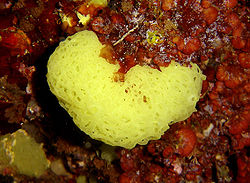| Clathrina rotunda | |
|---|---|
 | |
| Clathrina rotunda in Croatia | |
| Scientific classification | |
| Kingdom: | Animalia |
| Phylum: | Porifera |
| Class: | Calcarea |
| Order: | Clathrinida |
| Family: | Clathrinidae |
| Genus: | Clathrina |
| Species: | C. rotunda |
| Binomial name | |
| Clathrina rotunda Klautau & Valentine, 2003 [1] | |
Clathrina rotunda is a species of calcareous sponge from South Africa.